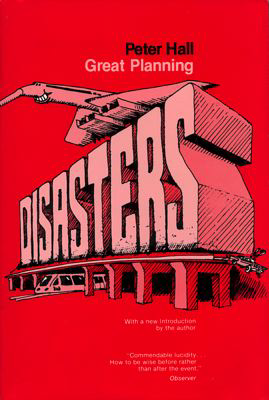No Light Rail in Vancouver!
Summer Book Reviews #5: The Peter Hall Trilogy

Once upon a time there was an urban planner who traveled around the world and looked at urban plans and discovered they were disasters. For this, he received a knighthood from the Queen.
Sir Peter Hall is a planning professor at University College in London, and he also taught and did research for a time at UC Berkeley. Though he believes in planning, his books provide an excellent case for antiplanners. In fact, whenever I get frustrated with some planner talking or writing about the wonders of planning, all I need to do is read a portion of one of these books to get a breath of fresh air from an objective observer of the profession.
Click on the image of each book to get information about purchasing a copy.
Published in 1980, the first book in the trilogy presents case studies of several
major planning disasters: the Concorde, the San Francisco BART system, the Sydney
Opera House, London motorways, and London’s third airport. Like Bent Flyvbjerg’s
more recent book, Megaprojects and Risk, Hall’s goal is to show that there are systematic
problems with large-
While Great Planning Disasters focused on large projects, Cities of Tomorrow is a
history of urban planning — at least, a history of planning in the English-
Hall finds that many early urban planners were actually anarchists. The main exception was the architect Le Corbusier, who Hall describes as “an authoritarian centralist.” The sad irony, of course, is that most of today’s planning — both the ideals of high densities and the government regulation to achieve those ideals — can trace its roots to Corbu, not to his anarchist colleagues and predecessors.
“The anarchist fathers had a magnificent vision of the possibilities of urban civilization,
which deserves to be remembered and celebrated,” says Hall. “Le Corbusier, the Rasputin
of this tale, in contrast represents the counter-
Hall is disdainful of the anti-
In short, he is skeptical of all of the modern, authoritarian, planning fads.
Hall’s magnum opus, and the third volume of this trilogy, is nearly 1,000 pages long — more, if you count the bibliography and index. The 1998 book looks at the history of cities in general by focusing in on the detailed histories of sixteen different cities, ranging from Athens to London to Los Angeles.
I confess I haven’t read this entire book, but use it as more of a textbook. For
example, when I read a book that claims planners did a wonderful job building high-
As a result, the high-
Taken together, these three books show the follies behind the very idea of planning. Planning advocates can make their ad hominem attacks on the Antiplanner, but it is hard for them to respond when one of their own is saying the same things.
15
Trackback • Posted in City planning, Regional planning
Reprinted from The Antiplanner


